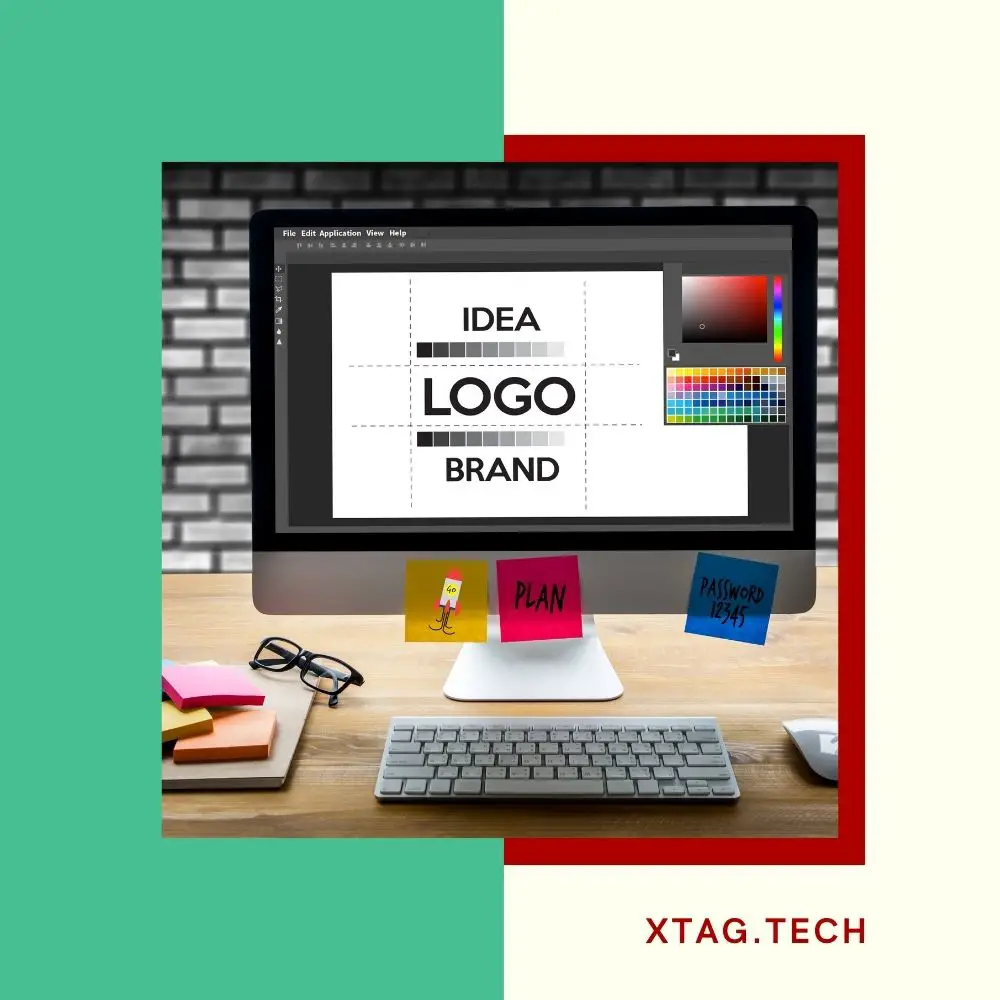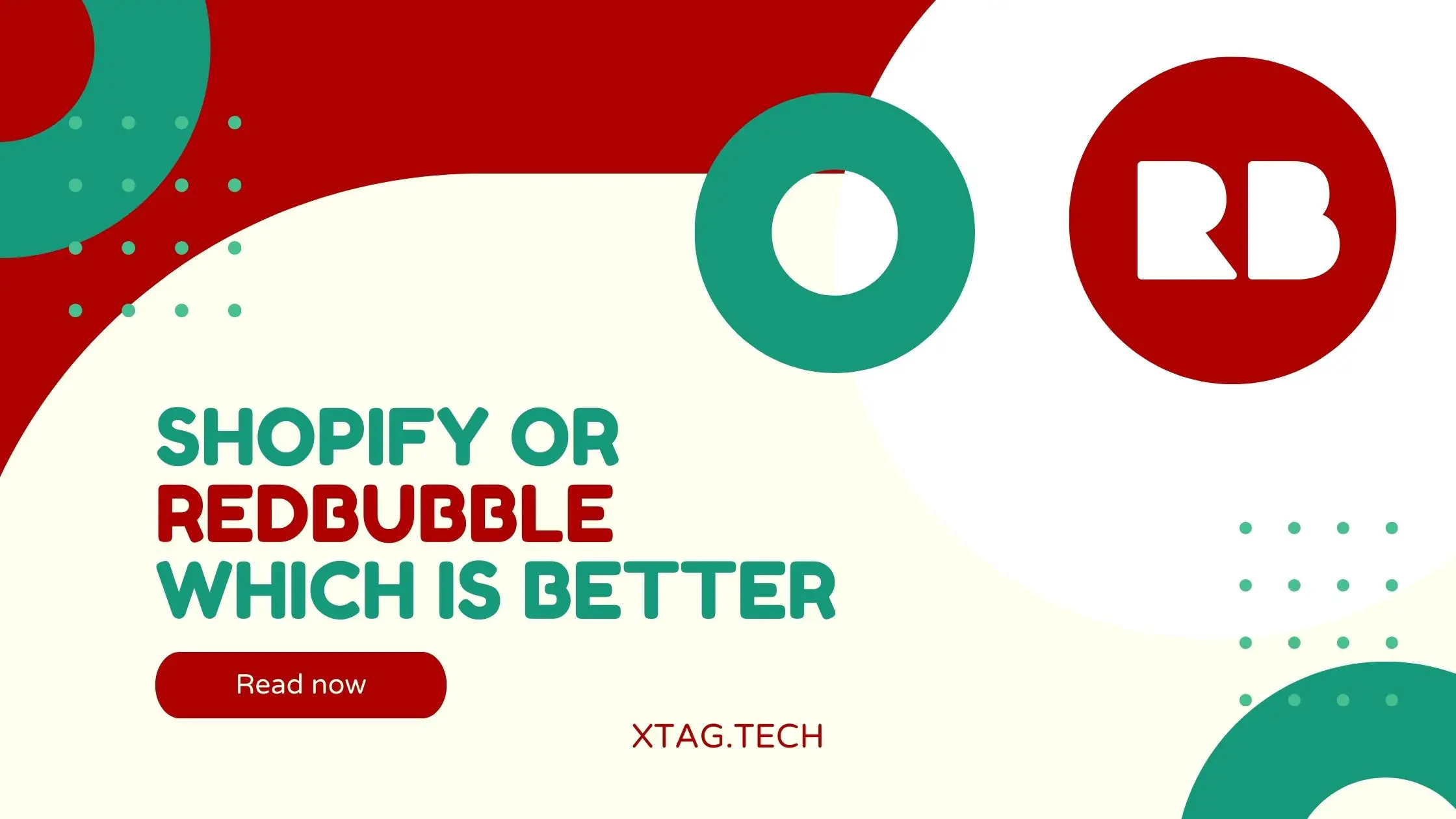In the expansive world of online commerce, choosing the perfect platform can be the difference between flourishing as a designer and getting lost in the digital crowd. Redbubble and Shopify are two prominent contenders in this arena, each boasting unique features and benefits. To make an informed decision, it’s crucial to comprehend what these platforms offer and how they align with a designer’s objectives.
In this article, we will take a close look at Redbubble and Shopify, unraveling their strengths, weaknesses, and overall suitability for designers. By the end of this journey, you’ll have a clearer perspective on which platform can potentially propel your design endeavors to new heights.
Redbubble: A Designer’s Paradise

Explanation of What Redbubble Offers to Designers
Imagine stepping into an artistic wonderland, where your designs can come to life and reach a global audience effortlessly. This is the essence of Redbubble, a platform tailored to cater to the creative aspirations of designers. Redbubble provides a user-friendly interface where designers can showcase their artwork on a plethora of products ranging from T-shirts to phone cases, stickers, home decor, and much more.
The beauty of Redbubble lies in its simplicity. Designers upload their artwork, choose the products they want to feature it on, set their own prices, and Redbubble takes care of the rest – printing, shipping, and handling customer service. It’s a seamless and hassle-free way for designers to transform their creativity into a tangible business.
Pros and Cons of Using Redbubble for Designers

Pros
- Wide Product Range: Redbubble offers an extensive range of products, allowing designers to showcase their art on various items, catering to different preferences.
- Global Reach: The platform provides access to a global market, enabling designers to reach a diverse audience without the need for extensive marketing efforts.
- Easy to Use: Redbubble’s interface is intuitive, making it easy for designers to upload their designs and customize products quickly.
- Print-on-Demand: The print-on-demand model eliminates the need for inventory management, reducing upfront costs and risks for designers.
Cons
- Limited Branding: Designers have limited control over branding and customization of their store, which can impact brand recognition.
- Commission Rates: While convenient, the commission rates on Redbubble may be lower compared to self-hosted platforms like Shopify.
- Competitive Market: The vast number of designers on Redbubble means increased competition, making it essential to stand out.
In the next section, we’ll explore another juggernaut in the e-commerce world – Shopify, and how it caters to the needs of designers.
Redbubble

Like any professional POD “Print On Domand”, Redbubble is a global online marketplace that allows artists to sell their designs as a wide range of products, including clothing, accessories, home decor, and more. It provides a user-friendly interface that enables designers to upload their artwork, set their own prices, and choose from various product options.
Redbubble’s Key Features
- 1. Product Variety: Redbubble offers a diverse range of products, including t-shirts, hoodies, stickers, phone cases, wall art, and more. This extensive product catalog allows designers to showcase their artwork on various mediums, giving them more opportunities to attract a wider customer base.
- 2. Print-on-Demand: One of Redbubble’s biggest advantages is its print-on-demand feature. This means that products are only printed and shipped once an order is placed. As a designer, you don’t need to worry about inventory management or upfront costs. Redbubble takes care of the production, fulfillment, and shipping process, allowing you to focus solely on creating and marketing your designs.
- 3. Global Reach: Redbubble has a vast international customer base, giving designers the opportunity to reach customers from all around the world. The platform handles international shipping and customer support, making it convenient for both designers and customers.
- 4. Community and Discovery: Redbubble fosters a vibrant community of artists and designers. The platform encourages interaction and collaboration between creators, providing opportunities for exposure and feedback. Additionally, Redbubble has a comprehensive search and discovery system that helps users find designs based on keywords, tags, and categories. This can significantly increase the visibility of your work.
Pricing

Redbubble offers a free membership, allowing designers to create and upload their designs without any upfront costs. The platform earns a commission on each sale, and designers receive a percentage of the total price. While this model eliminates the need for initial investment, it also means that designers have less control over pricing and profit margins.
Customization Options
Redbubble provides several customization options for designers. You can choose from a variety of product templates and color options. Additionally, you can add your own branding, such as a logo or signature, to personalize your products. However, the level of customization is limited compared to other platforms like Shopify.
Marketing Tools

Redbubble offers various marketing tools to help designers promote their products. These include the ability to add tags, descriptions, and titles to optimize your designs for search engine visibility. Redbubble also provides social sharing buttons, allowing you to easily promote your work on social media platforms.
User Experience
Redbubble’s user interface is intuitive and user-friendly, making it easy for designers to navigate and manage their products. The platform provides detailed analytics and sales statistics, allowing designers to track their performance and make informed decisions about their business strategies.
Shopify
Shopify is a leading e-commerce platform that allows designers to create their own online stores. It offers a comprehensive suite of tools and features to help designers build, customize, and market their brands.
Shopify’s Key Features
- 1. Full Control: With Shopify, designers have complete control over their online stores. You can customize the look and feel of your store using pre-designed templates or by coding your own website. This gives you the freedom to create a unique brand identity and establish a strong online presence.
- 2. Extensive App Store: Shopify has an extensive app store that offers a wide range of add-ons and integrations. These apps can enhance your store’s functionality, providing features such as advanced analytics, email marketing, SEO optimization, and more. This flexibility allows you to tailor your store to meet your specific needs and goals.
- 3. Payment Options: Shopify offers multiple payment options, including credit cards, PayPal, and various third-party payment gateways. This ensures that customers can complete their purchases using their preferred method, increasing conversion rates and customer satisfaction.
- 4. Inventory Management: Unlike Redbubble’s print-on-demand model, Shopify requires designers to manage their own inventory. This can be advantageous if you have complete control over your production process or if you offer unique, limited-edition products. However, it also means that you need to invest in inventory upfront and handle the logistics of storage, packaging, and shipping.
Pricing
Shopify offers various pricing plans, ranging from basic packages suitable for small businesses to advanced plans for larger enterprises. The cost varies depending on the features and services included. Additionally, Shopify charges transaction fees for each sale made through external payment gateways. However, these fees can be waived or reduced by using Shopify’s own payment gateway, Shopify Payments.
Customization Options
One of Shopify’s biggest strengths is its extensive customization options. You can choose from a wide range of professionally designed templates or create your own custom website using Shopify’s built-in theme editor or by coding your own HTML and CSS. This level of customization allows you to create a unique and visually appealing online store that reflects your brand identity.
Marketing Tools
Shopify provides a comprehensive set of marketing tools to help designers promote their products and drive traffic to their online stores. These tools include SEO optimization, social media integrations, email marketing, discount codes, abandoned cart recovery, and more. Additionally, Shopify offers detailed analytics and reports, enabling you to track your store’s performance and make data-driven marketing decisions.
User Experience
Shopify’s user interface is highly intuitive and user-friendly, making it easy for designers to set up and manage their online stores. The platform provides extensive documentation, tutorials, and a 24/7 customer support team to assist users with any questions or issues they may encounter.
Comparison of Features
Financial Aspects
- Redbubble: Offers a straightforward revenue model where designers set their prices above the base cost, and the difference is their earnings. Simplifies transactions and payments, transferring the designer’s earnings to their PayPal or bank account.
- Shopify: Involves initial costs, including subscription fees and transaction fees based on the chosen plan. Allows designers to set their prices and manage profit margins. Transaction fees may apply based on the payment gateway used.
Verdict: Depends on Business Model and Scale
- Redbubble offers a simpler revenue model, while Shopify provides control over pricing and profit margins, making it suitable for established designers willing to manage the associated costs.
Ease of Use
- Redbubble: Provides an intuitive and user-friendly interface, making it easy for designers to upload artwork and customize products. Simplifies the selling process, requiring minimal technical knowledge.
- Shopify: Offers a user-friendly interface, but may have a slight learning curve, especially for those new to e-commerce platforms. Provides extensive customization options, allowing designers to design their store to match their brand identity.
Verdict: Redbubble for Simplicity, Shopify for Customization
- Redbubble is easier to get started with, while Shopify offers more customization options, suitable for those willing to invest time in learning the platform.
In the subsequent section, we’ll explore how each platform impacts a designer’s reach and brand visibility, shedding light on the critical aspect of customer reach and branding.
Customer Reach and Branding
Redbubble:
- Provides exposure to a vast user base and a built-in customer network, enhancing the visibility of a designer’s work.
- Offers a marketplace where users often discover new artists and designs, providing a platform for emerging designers to gain recognition.
Shopify:
- Requires proactive marketing and promotional efforts to drive traffic to the online store and gain a customer base.
- Provides extensive customization options, enabling designers to create a unique brand identity and offer a personalized shopping experience.
Verdict: Redbubble for Exposure, Shopify for Custom Branding
- Redbubble offers inherent exposure through its marketplace, whereas Shopify allows designers to create a distinct brand identity and tailor the shopping experience for their customers.
Community and Networking
- Redbubble: Fosters a community of artists and designers, facilitating interaction and collaboration among creators. Provides opportunities for designers to learn from one another and share insights, fostering a sense of belonging.
- Shopify: Encourages designers to build their communities through various channels like social media, email marketing, and blogging. Offers integrations with social platforms to promote engagement and networking.
Verdict: Redbubble for Built-in Community, Shopify for Self-Created Community
- Redbubble has a pre-existing community, while Shopify empowers designers to build and nurture their communities.
In the concluding section, we’ll summarize the key points and provide a suggestion to help designers make an informed decision between Redbubble and Shopify.
Ease of Use
I believe that the both marketplace are easy to use and work on it, but that doesn’t make sense because we need to give a clear and logical judgment so let’s figure it out:
Redbubble: A Seamless Experience
Redbubble is renowned for its simplicity. The platform’s user-friendly interface ensures that creators can easily navigate and upload their designs. From setting up a store to managing product listings, Redbubble streamlines the process, making it accessible even for beginners. The intuitive design contributes to a smooth user experience, fostering a creative environment.
Shopify: Empowering Control with User-Friendliness
While Shopify may appear more intricate, it compensates with a wealth of features. The platform strikes a balance between sophistication and user-friendliness. The setup process is well-guided, and the dashboard provides a comprehensive overview of your store. Customization options might require a bit more exploration, but the learning curve is reasonable, granting users the ability to design their store exactly as they envision.
Decision Point
Choosing between Redbubble and Shopify in terms of ease of use depends on your comfort level with technology and your specific requirements. If simplicity is your priority and you prefer a straightforward approach, Redbubble might be the ideal choice. However, if you seek more control and are willing to invest a bit of time in mastering the platform, Shopify offers unparalleled customization options.
Design and Branding
Redbubble: Empowering Creativity
Redbubble stands out as a haven for creative individuals. The platform provides robust design tools that allow creators to showcase their artistic flair effortlessly. From apparel to home decor, the diverse product range serves as a canvas for designers to express themselves. Redbubble’s emphasis on individuality makes it a go-to platform for those who prioritize artistic expression.
Shopify: Crafting a Unique Brand Identity
Shopify, while not exclusively focused on design, offers extensive customization options to build a brand that stands out. The platform allows users to choose from a variety of themes, tweak them according to their preferences, and create a store that aligns with their brand identity. The emphasis is on creating a cohesive and memorable online presence.
Decision Point
The choice between Redbubble and Shopify in terms of design and branding hinges on your primary goals. If your emphasis is on showcasing unique designs with minimal effort on branding, Redbubble is the natural choice. However, if you envision a fully branded online store where design and identity go hand-in-hand, Shopify provides the tools to create a polished and cohesive brand image.
Product Catalog and Variations
Redbubble: Diverse Product Range
Redbubble boasts a diverse catalog, ranging from clothing and accessories to home decor items. Creators can showcase their designs on an array of products, expanding their reach to different markets. The platform’s automated production and fulfillment process ensure that products reach customers promptly, allowing creators to focus on their craft.
Shopify: Flexibility in Product Variations
Shopify, as a comprehensive e-commerce platform, provides flexibility in handling product variations. Whether you’re selling different sizes, colors, or customizable items, Shopify’s robust system can accommodate diverse product offerings. This flexibility is particularly advantageous for businesses with a wide range of products or those planning to expand their catalog in the future.
Choosing between Redbubble and Shopify in terms of products and variations depends on your business model. If you aim for a specialized niche with a focus on specific products, Redbubble’s curated selection might be ideal. On the other hand, if you foresee a need for a broad product range with flexibility in variations, Shopify provides the necessary tools for expansion.
Shipping and Fulfillment
Redbubble: Automated and Hassle-Free
Redbubble’s automated fulfillment process is a standout feature for creators. Once a product is sold, Redbubble takes care of production, packaging, and shipping. This hands-off approach allows creators to concentrate on designing while Redbubble handles the logistics. Additionally, the platform provides tracking information for both sellers and customers, ensuring transparency throughout the fulfillment process.
Shopify: Managing Shipping with Control
Shopify provides users with more control over the shipping and fulfillment process. While it requires a bit more hands-on involvement, this can be an advantage for businesses seeking a personalized touch. Shopify integrates with various shipping carriers, allowing users to choose the best shipping options based on their needs. This control is particularly beneficial for businesses with specific shipping requirements.
The decision between Redbubble and Shopify in terms of shipping and fulfillment depends on your preference for automation versus control. If you value a hands-off approach and want the logistics handled seamlessly, Redbubble’s automated system is a strong contender. However, if you prefer to have more control over the shipping process and want to personalize the experience for your customers, Shopify offers the necessary tools.
Customer Support
Redbubble: Community-Focused Assistance
Redbubble prides itself on fostering a supportive community. While they offer email support for specific issues, a significant portion of assistance comes from the platform’s community forums. Creators often share insights, tips, and solutions to common challenges. The community-centric approach can be beneficial for those who appreciate learning from the experiences of fellow creators.
Shopify: Diverse Support Channels
Shopify, being a comprehensive e-commerce platform, provides multiple support channels. Users can access 24/7 customer support through live chat, email, or phone. Additionally, Shopify offers an extensive knowledge base and community forums. The range of support options ensures that users can find help in a way that suits their preferences and urgency.
Choosing between Redbubble and Shopify in terms of customer support depends on your preferred style of assistance. If you value community engagement and learning from peers, Redbubble’s community forums can be enriching. On the other hand, if you prefer direct and diverse support channels with the option for immediate assistance, Shopify’s comprehensive support system may better suit your needs.
As we mention below we want to be equally, but as person I see it’s my responsibility to say the truth, Redbubble’s support is the worst, why? imagine your goods doesn’t arrive at the planned time, what you should to do? obviously contact them, but how? let me give you a fresh shock, you can’t reach their support team, the only way is by Emailing or their Stupid Community, So now the decision is yours, other hand Shopify support offer 24/24 chat support, which means they really care about their customers
Conclusion
In the realm of e-commerce for designers, Redbubble and Shopify each hold their unique allure. Redbubble emerges as an artist’s paradise, offering a vast product range, a global customer base, and a simple, hassle-free selling process through its print-on-demand model. The platform provides an excellent starting point for emerging designers, allowing them to share their creativity with the world without the complexities of inventory management.
On the other hand, Shopify stands as a powerhouse, empowering designers with complete control over their brand and store. With extensive customization options, a scalable model, and a rich app ecosystem, Shopify allows designers to create a distinct online presence. It’s the platform of choice for those seeking to build a brand, offer a unique shopping experience, and have control over pricing and profit margins.
So, which one is better for designers? The answer lies in your aspirations and goals as a designer. If you’re looking for simplicity, exposure, and ease of use, Redbubble might be your ideal starting point. It offers a low entry barrier and the opportunity to get your designs in front of a wide audience quickly.
On the other hand, if you seek complete control over your brand, extensive customization options, and the willingness to invest time in learning and managing an online store, Shopify could be the platform that aligns best with your long-term goals.
